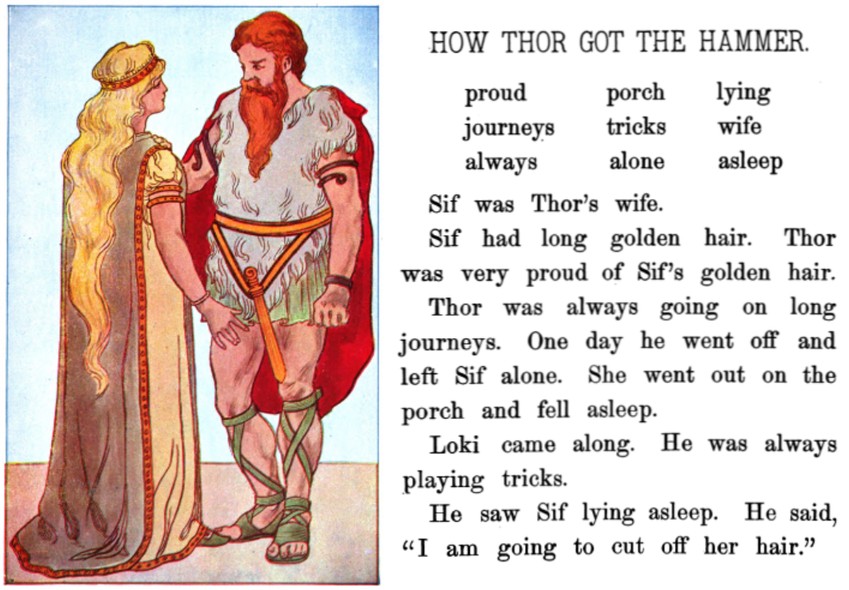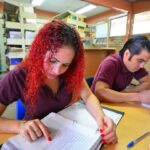Fourth Grade Language Arts Lessons & Activities by CoreKnowledge
Continuing with this series, this post gives you the complete set of the freely available Grade 4 Language Arts curriculum providing reading and language arts lessons, instructions and teaching modules, published by CoreKnowledge. Included in these content-rich units to help increase student skills are student activity books, readers, teacher guides, digital components and alignment charts. These include learning materials for language arts, history and geography. (All file sizes larger than 5MB are indicated.) Lower grade free language arts materials are also available: Kindergarten, First Grade, Second Grade and Third Grade.
DOCUMENTS TO VIEW AND DOWNLOAD FOR GRADE 4 LANGUAGE ARTS CURRICULUM:
Introduction: Teacher Guide – Grade 4
The Introduction to grade 4 CKLA provides component descriptions as well as background information on common lesson types and instructional practices.
Decoding and Encoding Remediation Supplement (21.72MB)
The Decoding and Encoding Remediation Supplement contains assessments and remediation materials for grades 4 and 5 that build incrementally, intended for use with students who have gaps in their code knowledge or fluency.
Beginning-of-Year Assessment: Teacher Guide – Grade 4
The Beginning-of-Year Assessment consists of reading comprehension, grammar, morphology, word reading in isolation, and fluency assessments. The analysis and placement recommendations determine students’ preparedness for grade-level CKLA instruction.
Yearlong Teacher Resources: Teacher Guide – Grade 4 Ancillary Materials
The Yearlong Teacher Resources document includes resources for use across multiple CKLA units. These include an Individual Code Chart, Anecdotal Reading Records, Tens Recording and Conversion charts, Using Chunking to Decode Multisyllabic Words, and the Sound and Spelling of Schwa.
Fluency Supplement: Fourth and Fifth Grade Ancillary Materials
The Fluency Supplement contains selections from a variety of genres for grades 4 and 5 to provide additional opportunities for students to practice reading with fluency and expression.
LA Unit 1: Brown Girl Dreaming
Students begin the year identifying, describing, and using elements of a memoir, both in reading and writing, through the study of the award-winning memoir, Brown Girl Dreaming. Students will begin to explore the issues of individual identity, connections to family and the wider community as they follow author Jacqueline Woodson through her free verse exploration of her early years in the segregated South, Ohio, and New York. Throughout the unit, students review the writing process and engage in an extended writing project, exploring their own sense of identity and personal values. The unit includes a Beginning of Year Assessment.
LA Unit 2 Grade 4 Skills – The Middle Ages
Students develop reading and writing skills through engagement with informational text in the Student Reader Knights, Castles, and Chivalry. The unit provides background information to place the Middle Ages in western Europe in historical and geographical context. Students learn about the feudal system, chivalry, manors, the growth of towns, the power of the Christian Church, the Magna Carta, the plague, and the legacy of the Middle Ages. Students review the writing process and engage in an extended writing project. Lessons include explicit instruction in grammar, morphology, and spelling.
- Teacher Guide: The Middle Ages – Unit 2 (16.54MB)
- Activity Book: The Middle Ages – Unit 2 (17.78MB)
- Student Reader: Knights, Castles and Chivalry – Unit 2 (7.94MB)
- Digital Components: The Middle Ages – Unit 2
- Alignment Chart: The Middle Ages – Unit 2
LA Unit 3 Grade 4 Skills – King Arthur and the Round Table
Unit 3, King Arthur and the Round Table, brings the pageantry of knights in shining armor to the study and practice of reading and writing. Students continue to explore their own personal values through the legends of King Arthur and his knights. , As they continue their study of the writing process, students look at the differences between verse and prose in narratives. Students focus on character and dialogue in their own writing, as they draft and publish a short story. This unit also provides explicit instruction in reading, writing, morphology, grammar, and spelling.
- Teacher Guide: King Arthur and the Round Table – Unit 3
- Activity Book: King Arthur and the Round Table – Unit 3
LA Unit 4 Grade 4 Skills – Listen, My Children (poetry)
Unit 4 is a study of the poetry in the CKLA Grade 4 version of Listen, My Children, which addresses the study of poetry as a genre of literature for many reasons. Not only does the genre allow students to study literary techniques unique to poetry, but it exposes students to deep philosophical thoughts and emotional issues not always present in prose. In this unit, as students read the selected poems, they will focus on literary techniques used in that poetry, such as figurative language, rhyme schemes, metaphor, and repetition. Students will also examine specific vocabulary associated with poetry, including stanza, line, free verse, and narrative poem. Students will also be able to distinguish poetry from prose.
- Teacher Guide: Listen, My Children (poetry) – Unit 4
- Activity Book: Listen, My Children (poetry) – Unit 4
LA Unit 5 Grade 4 Skills – Geology
Students develop reading, writing, listening, and thinking skills through engagement with informational text in the Student Reader The Changing Earth. Students explore how different geological processes shape the earth’s landscape and related environments. Students learn that the earth is composed of layers that, through heat and pressure, cause movements that result in geological features above and below earth’s surface, such as mountains, volcanoes, and trenches. Students also study rock formation, weathering, and erosion in order to understand how the earth changes over time. Students write informational and descriptive paragraphs and practice using figurative language. Lessons include explicit instruction in grammar, morphology, and spelling.
- Teacher Guide: Geology – Unit 5 (39.01MB)
- Activity Book: Geology – Unit 5 (32.21MB)
- Student Reader: Geology – Unit 5 (33.94MB)
- Digital Components: Geology – Unit 5 (12.42MB)
- Alignment Chart: Geology – Unit 5
LA Unit 6 Grade 4 Skills – American Revolution
Students develop reading, writing, listening, and thinking skills through engagement with informational text in the Student Reader The Road to Independence. Students explore disagreements about principles of government that led the colonists in North America to seek independence from Great Britain. Students learn about the major figures, causes, and consequences of the American Revolution, and about significant ideas and values at the heart of the conflict. Students also read literary selections by Phillis Wheatley and Washington Irving. Students write a cause-and-effect essay. Lessons include explicit instruction in grammar, morphology, and spelling.
- Teacher Guide: American Revolution – Unit 6 (13.65MB)
- Activity Book: American Revolution – Unit 6
- Student Reader: American Revolution – Unit 6 (6.25MB)
- Digital Components: American Revolution – Unit 6
- Alignment Chart: American Revolution – Unit 6
LA Unit 7 Grade 4 Skills – The United States Constitution
In Unit 7, The United States Constitution, students will address the question: How was the United States Consitution created, and why has it lasted for more than 200 years? Students will explore the Articles of Confederation and other factors that led to the writing of the Constitution. They will finish the unit by writing an opinion piece. This unit also provides explicit instruction in reading, writing, morphology, grammar, and spelling.
- Teacher Guide: The United States Constitution – Unit 7
- Activity Book: The United States Constitution – Unit 7
LA Unit 8 Grade 4 Skills – Treasure Island
Treasure Island chronicles the adventures of the young narrator, Jim Hawkins, who discovers a treasure map and travels in search of the treasure on a distant island. The novel vividly portrays Jim’s encounters with dangerous pirates and shows how Jim uses his wits to outsmart the pirates. Through reading an abridged version of this classic novel, students learn about the adventure story as a specific genre of fiction. They explore the development of plot, characters, setting, and literary elements over the course of a longer work of fiction. Students also learn about topics relevant to the novel, such as geography and sailing. Students write a character sketch and an adventure story. Lessons include explicit instruction in grammar, morphology, and spelling.
- Teacher Guide: Treasure Island – Unit 8 (7.17MB)
- Activity Book: Treasure Island – Unit 8
- Student Reader: Treasure Island – Unit 8
- Digital Components: Treasure Island – Unit 8
- Alignment Chart: Treasure Island – Unit 8
-love learning -your best ed lessons guide, Scott





Thank you for sharing this!